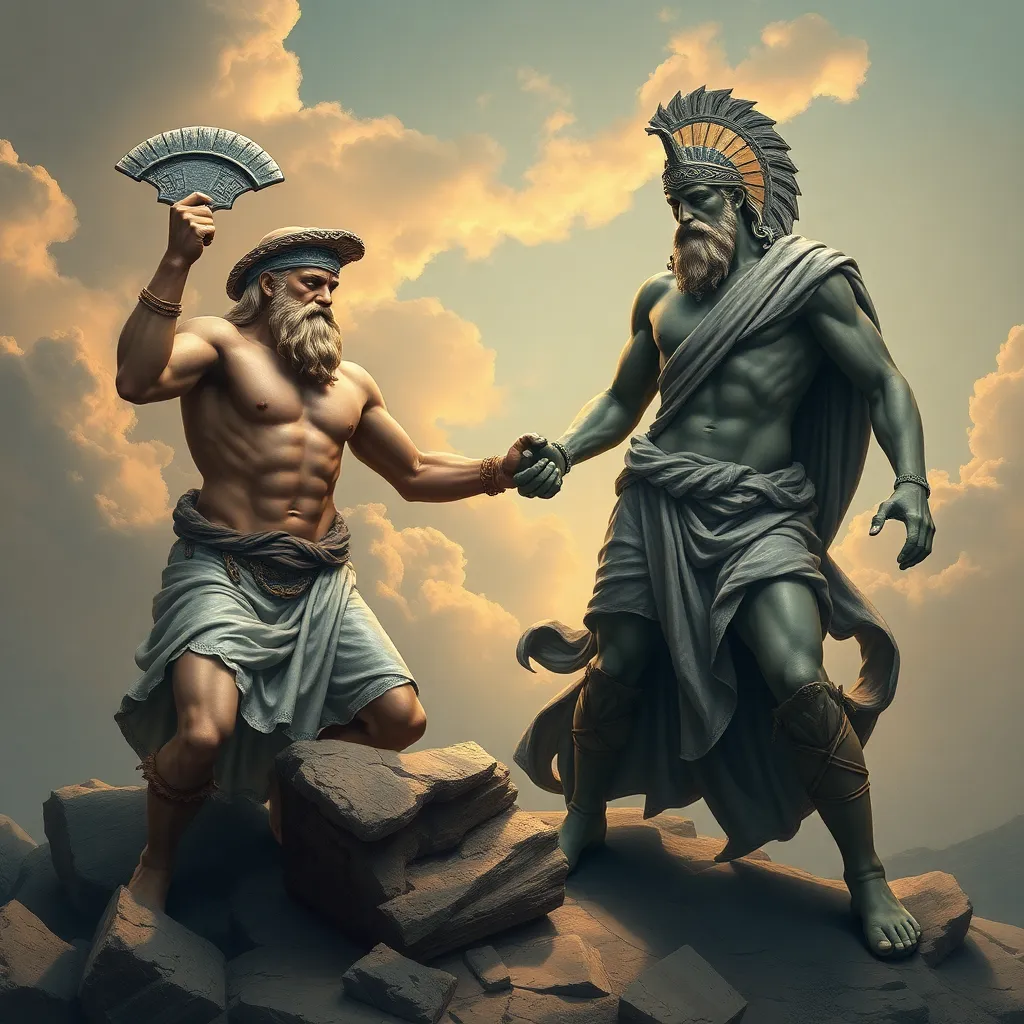Heracles and the Concept of Strength: Physical vs. Moral Fortitude
I. Introduction
Heracles, known as Hercules in Roman mythology, stands as one of the most iconic figures in Greek mythology. Renowned for his incredible strength and numerous adventures, he embodies the archetype of the hero. His narratives often emphasize the importance of strength, not just in physical terms but also in the moral realm. This article delves into the duality of strength as represented through Heracles’ character, exploring the intricate balance between physical prowess and moral fortitude.
II. The Legend of Heracles: A Synopsis
The tales of Heracles are rich and varied, with the most famous episodes being the Twelve Labors, a series of seemingly insurmountable tasks that he undertook as penance. These labors include:
- The Nemean Lion
- The Lernaean Hydra
- The Ceryneian Hind
- The Erymanthian Boar
- The Augean Stables
- The Stymphalian Birds
- The Cretan Bull
- The Mares of Diomedes
- The Belt of Hippolyta
- The Cattle of Geryon
- The Apples of the Hesperides
- The Capture of Cerberus
These tasks not only showcase Heracles’ extraordinary physical abilities but also present him with moral and ethical dilemmas, emphasizing the theme of struggle and perseverance throughout his journey.
III. Physical Strength: The Hallmark of Heracles
Physical strength, in the context of Heracles, is defined by his unmatched power and ability to perform extraordinary feats. His notable accomplishments include:
- Strangling the Nemean Lion with his bare hands
- Defeating the multi-headed Hydra by cauterizing its necks
- Overcoming the ferocious Erymanthian Boar
In ancient Greece, physical strength was celebrated and revered, often associated with heroism and valor. Heracles epitomized these ideals, serving as a symbol of what it meant to be physically strong in a society that placed high value on athletic prowess and physicality.
IV. Moral Fortitude: The Inner Strength of Heracles
Moral fortitude refers to the inner strength that enables individuals to face challenges with courage and integrity. For Heracles, this aspect is equally significant as it reflects his character beyond mere physicality. Instances of moral courage include:
- His willingness to sacrifice his own happiness for the greater good
- His struggle with madness sent by Hera, resulting in the tragic loss of his family
- His quest for redemption through the Twelve Labors
These moments illustrate that Heracles faced profound moral challenges, emphasizing that true heroism encompasses not only physical achievements but also the ability to confront and overcome personal demons.
V. The Duality of Strength in Heracles’ Journey
Heracles’ adventures demonstrate that both physical and moral strengths are essential for heroism. There are several notable examples where physical strength alone is insufficient:
- His battle with the Hydra required not just brute force, but also cunning and strategy.
- The capture of Cerberus necessitated compassion and understanding, as he had to bring the beast back alive.
- His decision to undertake the labors was rooted in a moral obligation to atone for his past actions.
This balance between physical and moral strength is what ultimately defines true heroism in Heracles’ journey, illustrating that strength is multifaceted, encompassing both body and spirit.
VI. Heracles as a Model for Modern Interpretations of Strength
The story of Heracles remains relevant in contemporary discussions about strength. As society evolves, so does the understanding of what it means to be strong. Modern figures who embody this duality of strength include:
- Activists fighting for social justice, exemplifying moral courage.
- Athletes who demonstrate resilience in the face of adversity.
- Everyday heroes who make sacrifices for others, reflecting moral fortitude.
Heracles serves as a model for these modern interpretations, reminding us that strength is not solely about physical capability but also about the courage to stand for one’s beliefs and values.
VII. Cultural Impact of Heracles on Strength Ideals
The influence of Heracles on art, literature, and popular culture is profound. His narrative has shaped the concept of strength throughout history. Key areas of impact include:
- Artistic representations in sculpture and painting, showcasing the idealized male form.
- Literary works that explore themes of heroism and moral dilemmas.
- Film and television adaptations that continue to reimagine his adventures for new audiences.
Heracles’ legacy is a lasting one, as he remains a central figure in discussions about the ideals of strength and heroism in modern society.
VIII. Conclusion
In summary, the significance of physical versus moral fortitude in the story of Heracles illustrates the complex nature of strength. His journey demonstrates that true heroism requires a balance of both forms of strength, each enriching the other. As readers reflect on their own definitions of strength, they are invited to consider the broader implications of Heracles’ legacy in their lives and societies.




